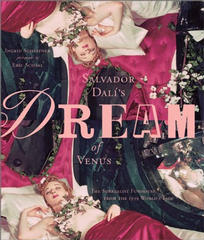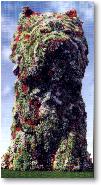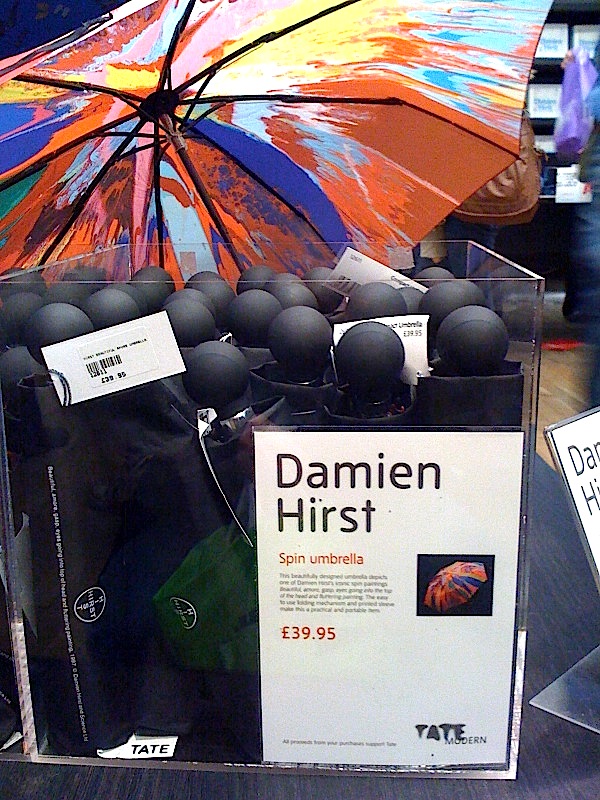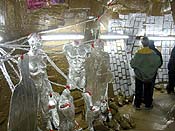
Last Tuesday there were two lectures I really wanted to go to, Village Voice critic Jerry Saltz’s talk at the ICA (see Libby’s post above) and ICA Curator Ingrid Schaffner’s talk about her new book, “Salvador Dali and the Dream of Venus” at Swarthmore. Of course the talks were scheduled at the same time…and I couldn’t go to either. My friend, painter Ann Northrup made it out to Swarthmore and phoned in this report.
report by ann northrup
Dali’s “Dream of Venus” was a pavillion/funhouse at the 1939 World’s Fair in New York. It was one of the most popular — and shocking — buildings in the fair. [You entered through a door framed by a woman’s legs; inside were bare-breasted women swimming in a tank and women sleeping next to some lobsters — not your typical fair fare.]
In her lecture, Schaffner talked about Dali as a populist and a kind of P.T. Barnum of the arts. She then linked Dali’s themes — art as spectacle; art for the masses, art involving sex and death — to work of Matthew Barney and other contemporary artists. Here are a few of Schaffner’s examples:

–Jeff Koons — the 7,000-flower Puppy. (image, right)
–Damien Hirst — the death showman (see dead shark in formaldahyde below, titled “The Physical Impossibility of Death in the Mind of Someone Living” 1991) Hirst’s show at Gagosian brought in 7,000 viewers per day, Schaffner said…almost as many as went to the Museum of Modern art during the same period (8,000 per day).
–Barney’s Guggenheim exhibition which had a funhouse atmosphere.
–Gregor Schneider’s “Totes (Dead) Haus u r,” a curious death funhouse — a house-within-a-house the artist’s been working on since he was 16 years old. He now cuts it up and re-assembles it in museums and other spaces…and you can walk through it. (Schneider has work up now at Barbara Gladstone Gallery (but not the Haus…)
(I wondered if the folks who made the movie “Being John Malkovich” know about Schneider…)
–Mariko Mori and “Dream Temple 99, a womb-like space you can walk through.
–Thomas Hirschorn’s “Cavemanman,” 2002, a post-apocalyptic cave wallpapered in duct tape that you walk through. (image right)
Questions raised by Schaffner: Is all this spectacle art due to some contemporary state of anxiety in the world? Do we need new levels of stimulation and amusement all the time? And are the boundaries between pop and high culture breaking down?
As for the role of the curator to judge all this? Schaffner said she doesn’t mind presenting spectacular art…if it has ideas…(That’s no pat on the back for the stuff.)
About Barney, Schaffner said
–a work of art should be open-ended and not prescribed…Barney’s world is sealed off and hermetic, but it does reflect the culture.
–It’s a hideous culture display when the country’s at war.
–it’s like Baroque art. It sweeps you off your feet.
In conclusion, Schaffner said “This [contemporary] work shifts the ground of operation and it’s important to experience the appeal of that.”
Hmmm, what does that mean? I guess you make your museum more spectacle-friendly and bring in that rock star [i.e., Patti Smith, whose drawings are at the ICA.]
–See Ann Northrup’s mural “Pride and Progress” on the side of the William Way Center at Spruce and Juniper Sts.










